Italy’s culinary landscape is as diverse as its geography, with each region offering a unique palette of flavors, ingredients, and traditions that reflect its history, climate, and culture. From the rich, buttery dishes of the north to the vibrant, olive oil-drenched cuisine of the south, Italy’s gastronomic heritage celebrates the country’s love of food. This guide takes you on a journey through Italy’s regions, exploring the distinctive culinary traditions that make Italian cuisine one of the most beloved worldwide.
1. Piedmont
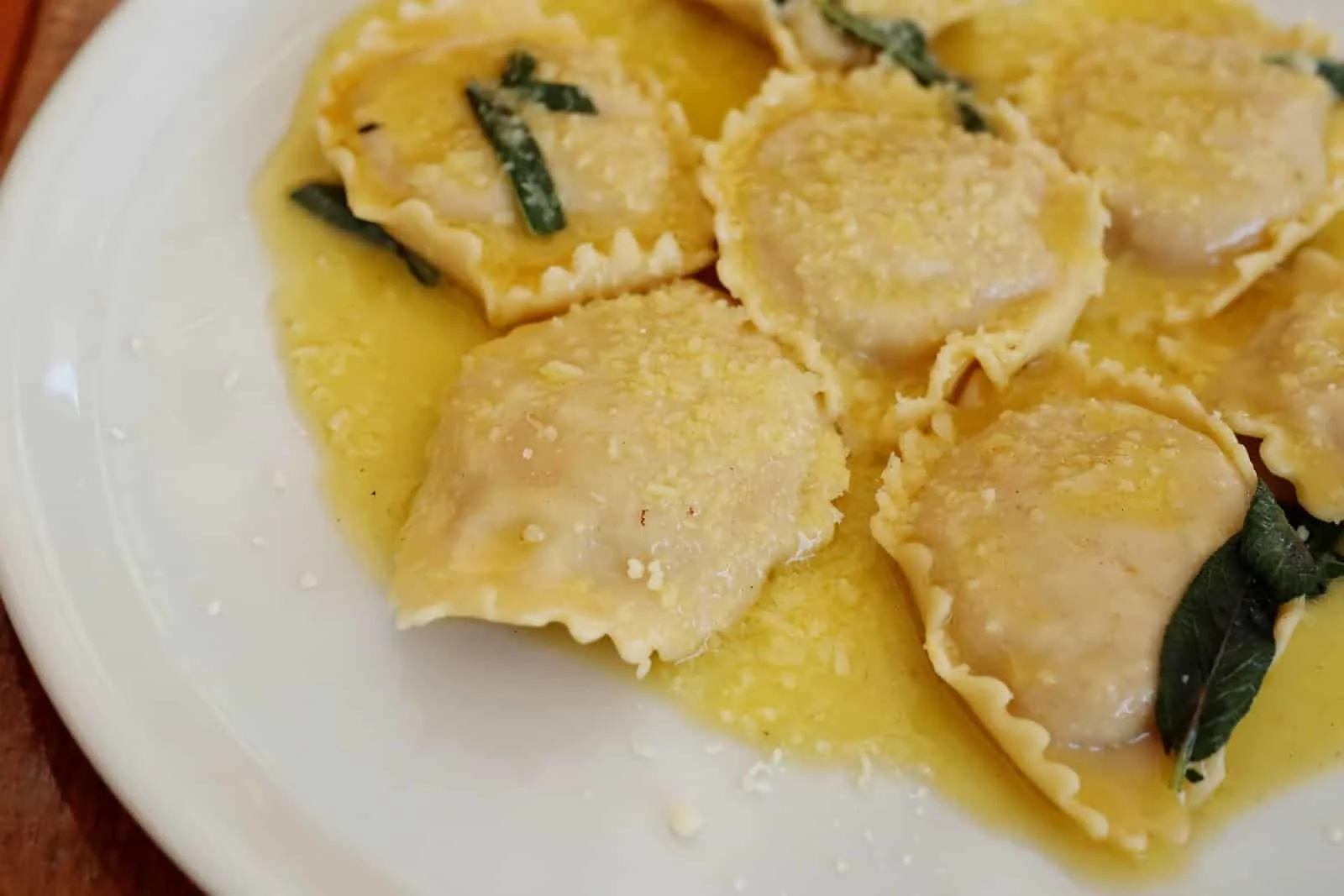
Image Credit: Shutterstock / Joyce Mar
Piedmont commends Italy’s gastronomic finesse, offering a blend of sophisticated flavors deeply rooted in the region’s affluent history and fertile landscapes. Here, the culinary scene is distinguished by its luxurious ingredients, such as the revered Alba white truffles and robust Barolo and Barbaresco wines, which are among the finest globally. The cuisine, influenced by both Italian and French culinary traditions, emphasizes rich and hearty dishes, with agnolotti del plin (small stuffed pasta) and brasato al Barolo (beef braised in Barolo wine) showcasing the region’s penchant for refined comfort foods. Piedmont’s commitment to quality and tradition is also evident in its leading role in the Slow Food movement, which began in Bra, advocating for sustainable and local farming. This culinary philosophy is palpable in every dish, from the simplest plate of tajarin (thin egg noodles) to elaborate preparations of fritto misto alla Piemontese, a mixed fry of meats, vegetables, and sweets. The region’s gastronomy celebrates its rich agricultural heritage, offering a taste of Italy’s aristocratic past through its elegant and complex flavors.
Insider’s Tip
Visit Alba in autumn to experience the White Truffle Fair, where you can savor this prized ingredient at its peak.
When to Travel
Autumn is for truffle season, and spring is for fresh produce and wines.
How to Get There
Fly into Turin, Piedmont’s capital, which is well-connected by flights from major European cities and by train from other Italian regions.
2. Lombardy
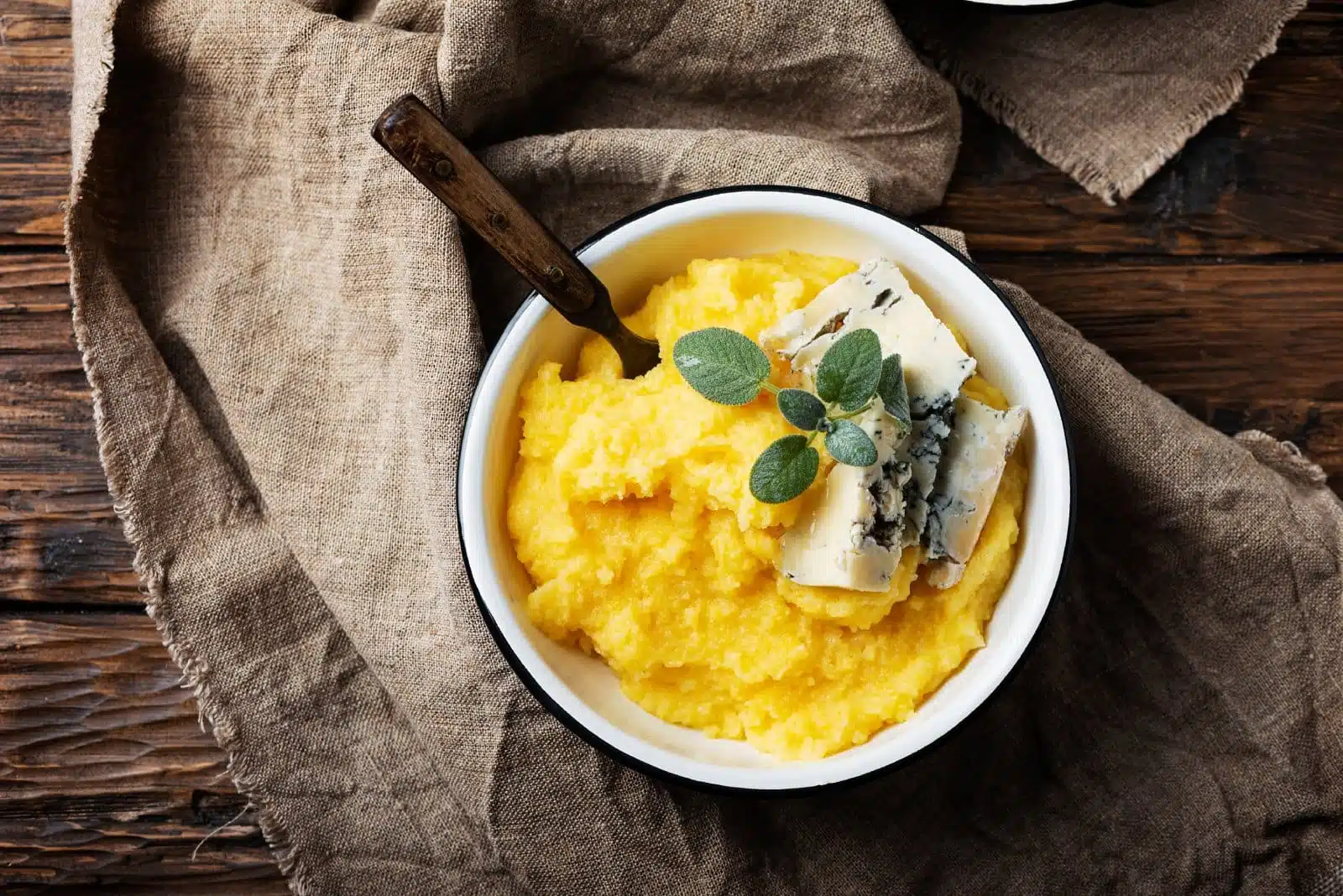
Image Credit: Shutterstock / Oxana Denezhkina
Lombardy, a region of striking contrasts from the Alpine peaks to the bustling metropolis of Milan. The region’s cuisine is characterized by its rich dairy products, especially cheeses like Taleggio, Gorgonzola, and Grana Padano, which are integral to Lombardy’s culinary identity. Risotto alla Milanese, a golden-hued dish made with saffron, epitomizes the elegance of Milanese cuisine, while the hearty, rural dishes such as polenta and osso buco reflect the region’s agrarian roots. Lombardy’s lakes contribute to its culinary diversity, with freshwater fish playing a significant role in the local diet. The region is also a leader in producing sparkling wines, with Franciacorta rivaling Champagne in quality and complexity. Lombardy’s culinary scene is a blend of sophistication and simplicity, where traditional recipes are preserved with a modern twist, reflecting the region’s rich cultural heritage and innovative spirit.
Insider’s Tip
Explore the Oltrepò Pavese area, often overlooked by tourists, for its excellent wines and charcuterie.
When to Travel
Fall for the harvest season, especially for wine and mushrooms.
How to Get There
Milan serves as a major international hub, with easy train access to Lombardy’s towns and countryside.
3. Veneto
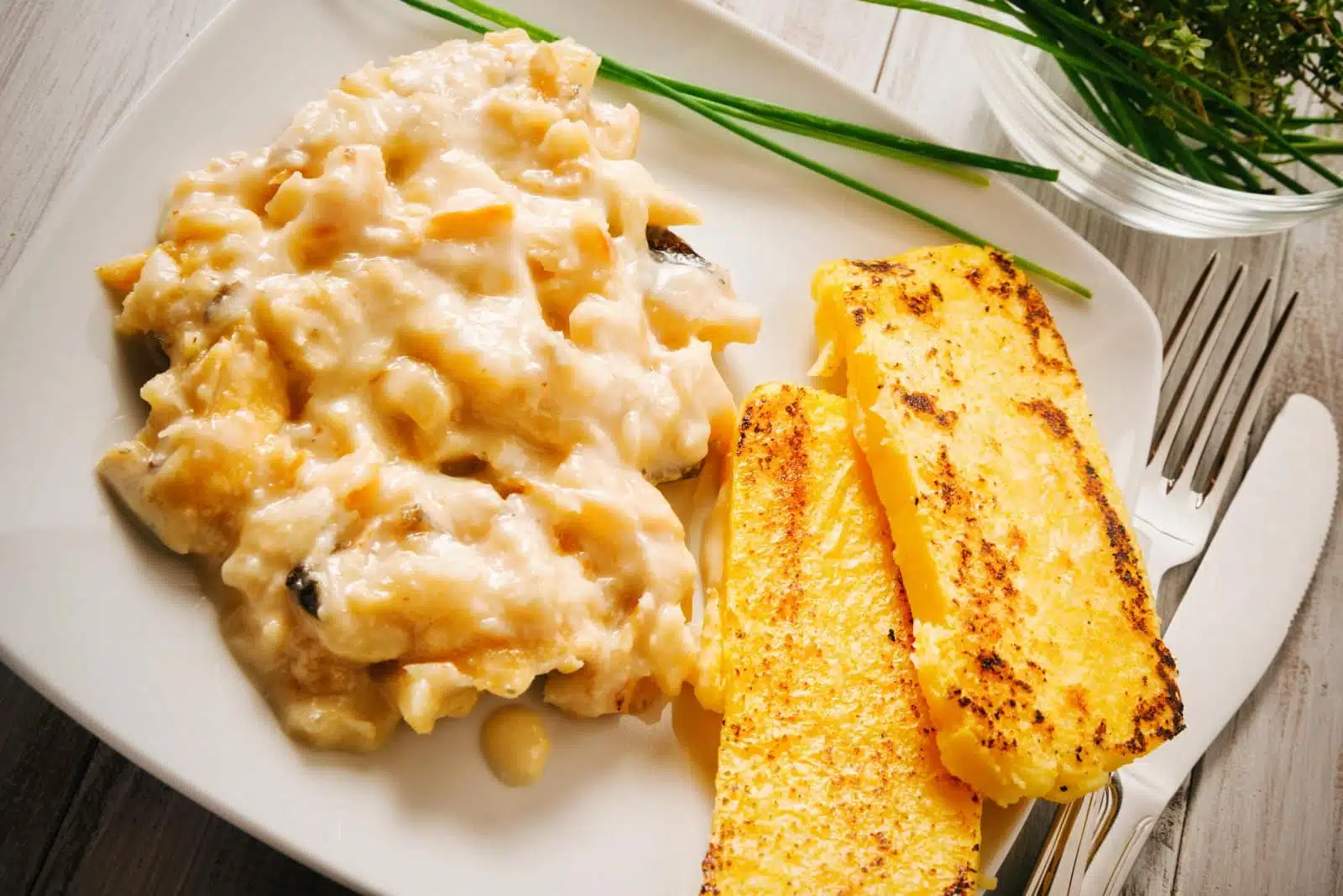
Image Credit: Shutterstock / Claudio Stocco
Veneto’s culinary landscape is as varied as its geography, from the Adriatic Sea to the Dolomite Mountains. This region offers a rich tapestry of flavors, where the seafood of Venice and the hearty dishes of the hinterlands coexist harmoniously. Veneto is the birthplace of many Italian culinary staples, including risotto and polenta, celebrated for their versatility and often served with radicchio, asparagus, or seafood, showcasing the region’s agricultural bounty. The tradition of Cicchetti, small snacks, or side dishes, embodies the Venetian way of life, encouraging leisurely dining and socializing. Veneto’s contribution to the wine world is unparalleled, with Prosecco leading the charge as a globally beloved sparkling wine, followed closely by the robust reds of Valpolicella, including the prestigious Amarone. The region’s culinary offerings showcase its rich cultural tapestry, blending rustic charm with refined elegance, inviting diners to explore its vast and varied gastronomic heritage.
Insider’s Tip
Take a food tour in Venice to discover hidden bacari (wine bars), where you can sample cicchetti, Veneto’s answer to tapas.
When to Travel
Spring and autumn for mild weather and local festivals.
How to Get There
Venice is the main gateway, with international flights and trains connecting it to other Italian cities and European capitals.
4. Emilia-Romagna
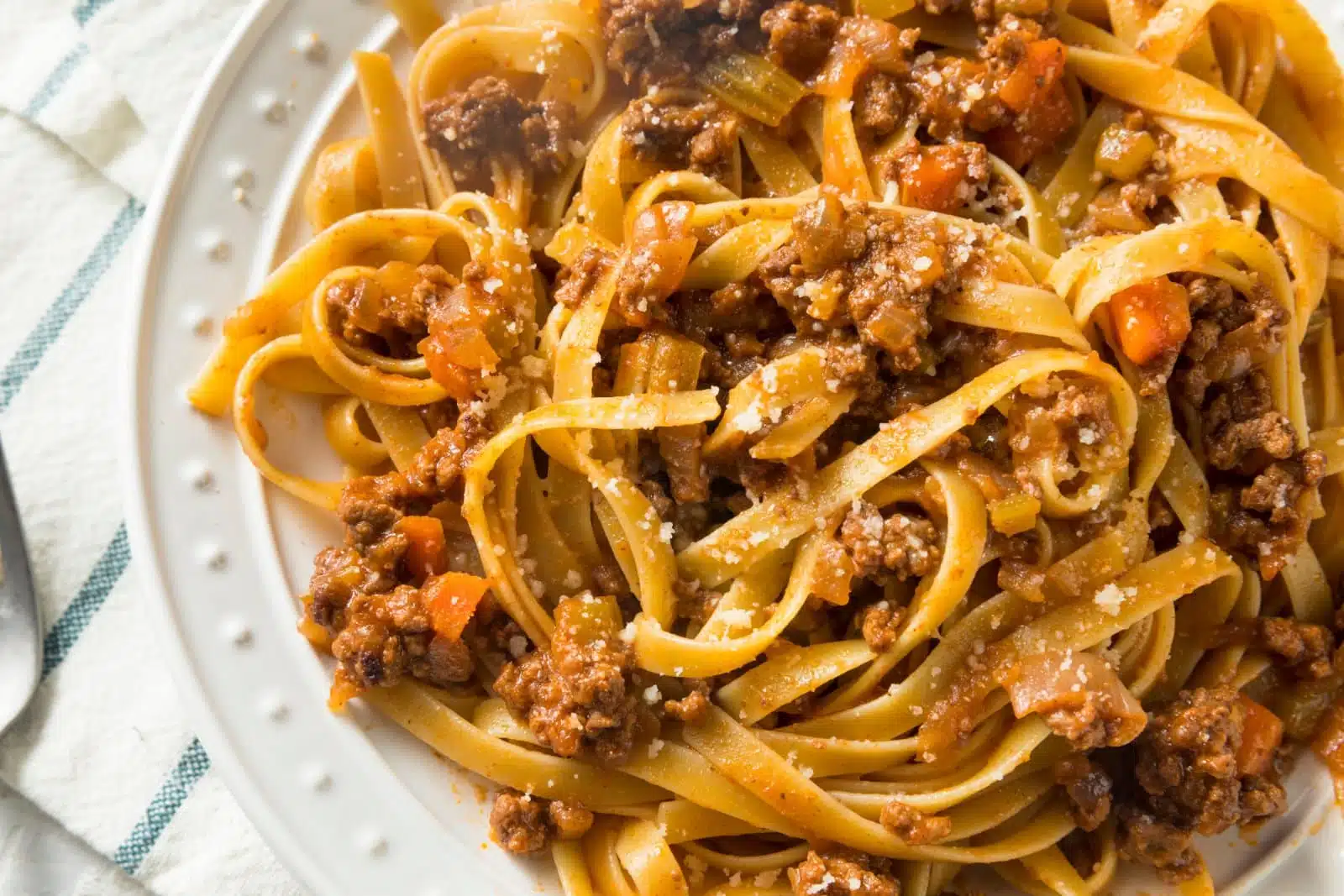
Image Credit: Shutterstock / Brent Hofacker
Emilia-Romagna, often hailed as the culinary heart of Italy, is a region where food is considered an art form, and its products and dishes are celebrated worldwide. This is the land of Parmigiano Reggiano, balsamic vinegar, and Prosciutto di Parma, which embody Italian culinary craftsmanship. The region’s capital, Bologna, gives the world Bolognese sauce. This meat-based sauce has become synonymous with Italian cuisine globally. Emilia-Romagna’s culinary prowess extends to its pasta, with tortellini, lasagna, and tagliatelle as staples of the local diet, highlighting the region’s agricultural and historical wealth. The Adriatic coast offers a bounty of seafood, enriching the region’s culinary diversity. Here, food is a celebration of life, with markets, trattorias, and family tables laden with dishes that have been perfected over generations, reflecting the pride and passion of the Emilian-Romagnese people for their rich gastronomic heritage.
Insider’s Tip
Visit Modena to tour a traditional balsamic vinegar acetaia, where you can learn about aging and taste different vintages.
When to Travel
Fall for food festivals and spring for fresh produce and mild weather.
How to Get There
Bologna’s international airport and its central train station make it a convenient regional entry point.
5. Tuscany
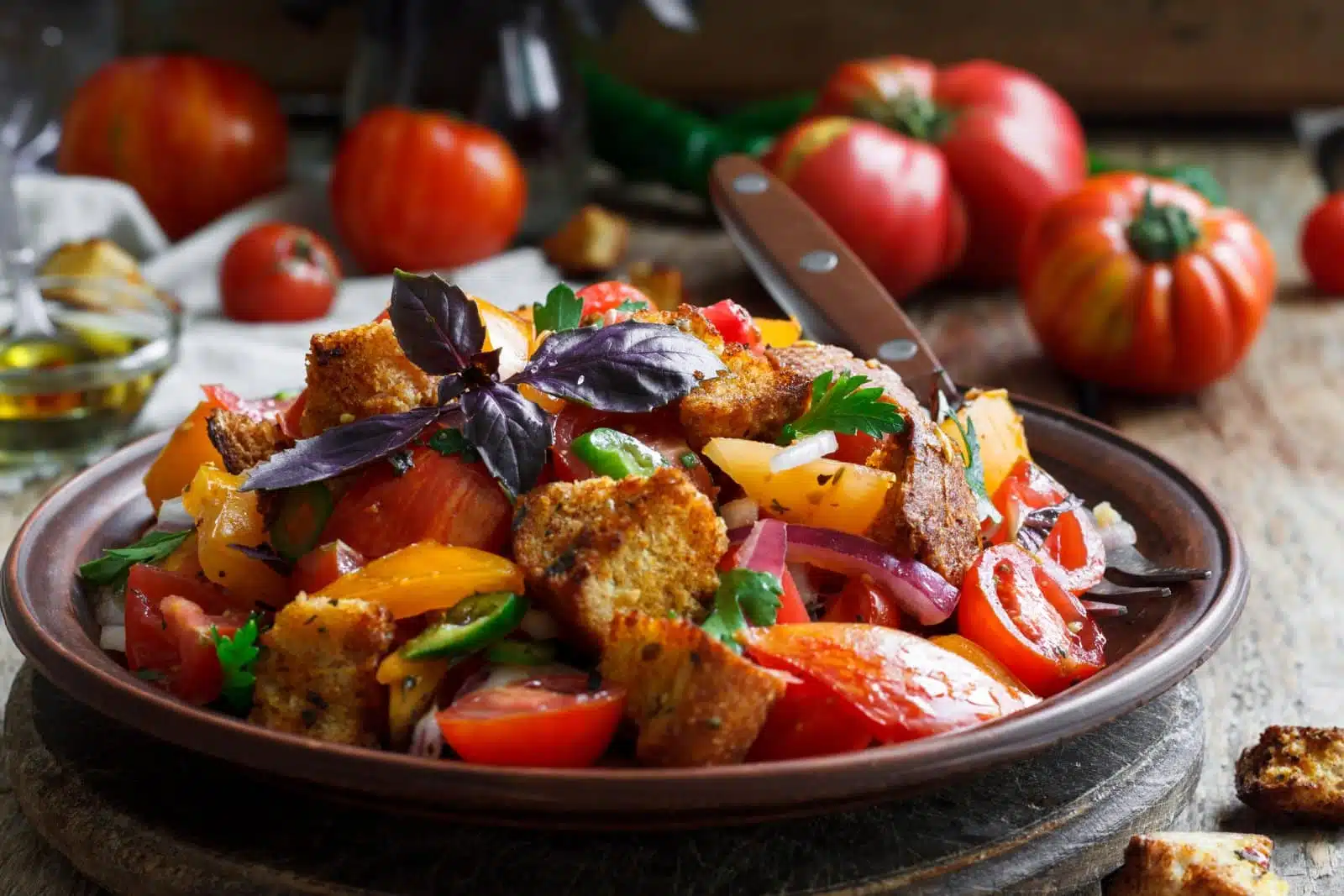
Image Credit: Shutterstock / YuliiaHolovchenko
Tuscany is a region that offers a culinary experience that is deeply rooted in its history and terroir. The Tuscan kitchen is famed for its simplicity, relying on the quality of ingredients rather than elaborate preparation. This is the home of Chianti, the ruby-red wine that has become emblematic of the Italian way of life, and olive oil that captures the essence of the region’s. Dishes like ribollita and pappa al pomodoro celebrate Tuscany’s agricultural bounty, featuring vegetables and legumes that are staples of the local diet. The region’s pastoral traditions are embodied in the Bistecca alla Fiorentina, a thick cut of beef grilled over chestnut embers, showcasing the quality of Tuscan cattle. Tuscany’s culinary offerings highlight the region’s enduring love affair with the land, where every meal is an opportunity to celebrate the simple yet profound pleasures of eating well.
Insider’s Tip
Participate in a cooking class at a Tuscan farmhouse to learn traditional recipes and techniques.
When to Travel
Autumn is for the olive harvest and wine festivals, and spring is for wild herbs and vegetables.
How to Get There
Florence and Pisa have international airports, and Tuscany is well-served by Italy’s train network.
6. Lazio
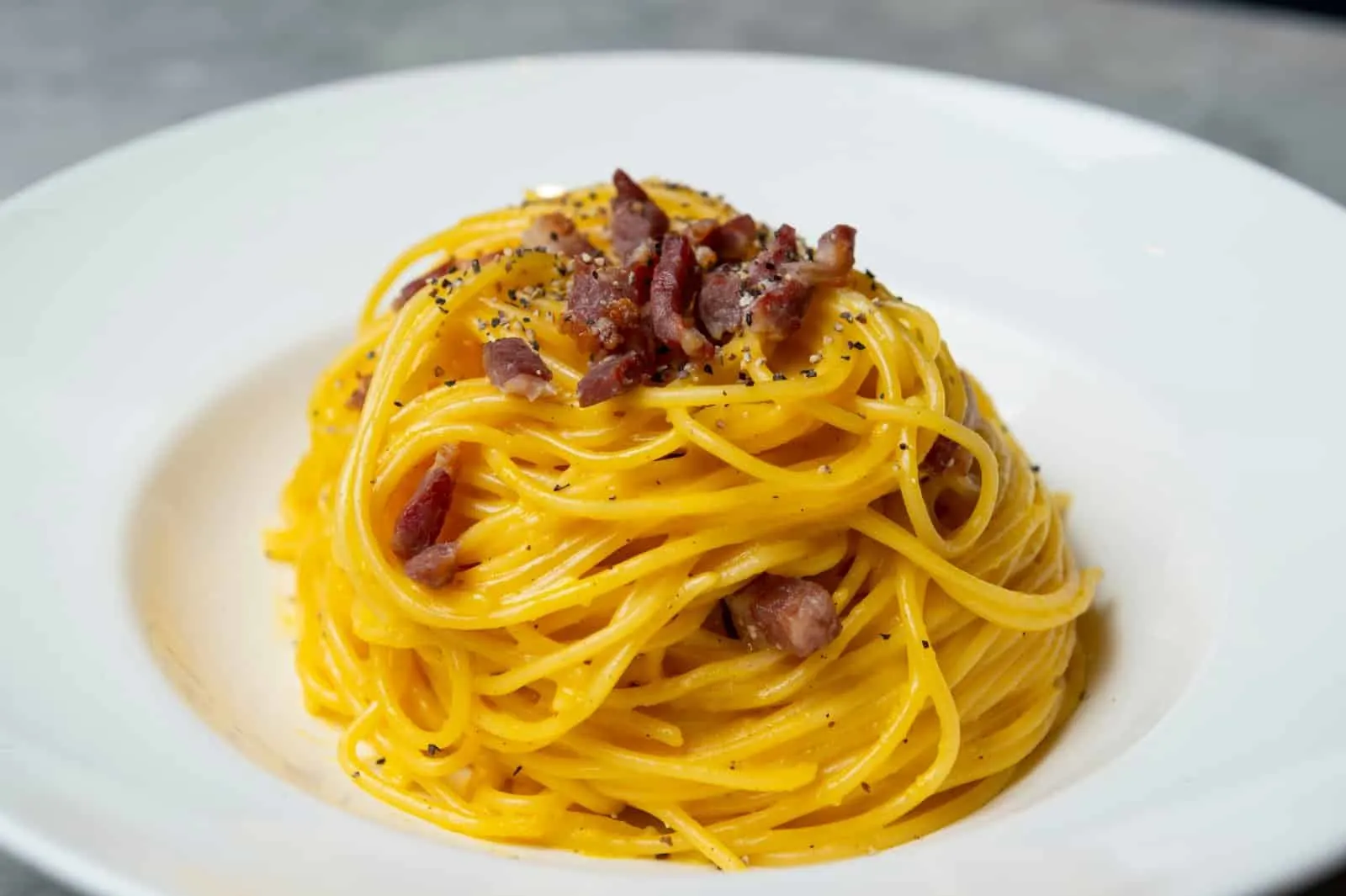
Image Credit: Shutterstock / algafu
In Lazio, the culinary tradition is steeped in history, with dishes that have evolved over centuries yet remain quintessentially Roman. This is a region where ancient culinary practices continue to influence modern dining, from the pastoral simplicity of Pecorino Romano to the indulgent richness of Carbonara, a testament to Rome’s enduring love affair with pasta. The region’s volcanic lakes and fertile plains provide a bounty of vegetables and legumes, with artichokes taking center stage in the Roman kitchen, prepared as Carciofi alla Romana or Carciofi alla Giudia. Lazio’s coastline offers a treasure trove of seafood, enriching the region’s culinary palette with dishes like spaghetti alle vongole. Lazio’s cuisine mirrors its landscape and history, offering a gastronomic journey that is both deeply rooted in tradition and vibrantly alive with contemporary innovation.
Insider’s Tip
Explore the Roman countryside, or Agro Romano, for its lesser-known wines and olive oils.
When to Travel
Spring is for artichokes, and autumn is for grape and olive harvests.
How to Get There
Rome’s two airports, Fiumicino and Ciampino, and its central location make Lazio easily accessible.
7. Campania

Image Credit: Shutterstock / anna.q
Campania is a region where the vibrancy of Italian cuisine is on full display, offering a palette of flavors that is as colorful as the landscapes. This is the birthplace of pizza, a dish that has conquered tables worldwide yet retains its soul in the narrow streets of Naples. The region’s volcanic soil nurtures San Marzano tomatoes, the foundation of Neapolitan pizza and countless Italian dishes. Campania’s coastline, stretching from the Amalfi Coast to the Cilento, provides an abundance of seafood, while the inland areas offer a variety of fresh produce, including the famed buffalo mozzarella. The cuisine of Campania is a celebration of the Mediterranean diet, where every dish, from the simplest plate of spaghetti al pomodoro to the elaborate pastiera Napoletana, showcases the region’s rich cultural and agricultural heritage.
Insider’s Tip
Visit a buffalo farm in the Paestum area to see how authentic Mozzarella di Bufala is made.
When to Travel
Spring and early autumn for mild weather and fewer tourists.
How to Get There
Naples has an international airport, and the region is well-connected by train to Rome and other parts of Italy.
8. Sicily

Image Credit: Shutterstock / Federico Gaudino
Sicily’s culinary identity is as complex and layered as its history, with influences from the Greeks, Arabs, and Normans woven into the fabric of its cuisine. The island’s diverse landscape, from the fertile valleys of the interior to the bountiful seas surrounding it, provides an array of ingredients that form the backbone of Sicilian cooking. Dishes like arancini and caponata reflect the island’s love for bold flavors and inventive cooking, while sweets like cannoli and cassata showcase the Arab influence on Sicilian pastry. Sicily is also home to some of Italy’s most distinctive wines, from the sweet Marsala to the robust Nero d’Avola, each telling a story of the island’s varied terroir. Sicilian cuisine is a testament to the island’s ability to absorb and transform myriad influences into a culinary tradition that is uniquely its own, offering a gastronomic experience that is rich, vibrant, and endlessly surprising.
Insider’s Tip
Attend a street food tour in Palermo to sample local specialties like Panelle (chickpea fritters) and Sfincione (Sicilian pizza).
When to Travel
Spring for wildflowers and autumn for the grape harvest and mild temperatures.
How to Get There
Sicily has airports in Palermo, Catania, and Trapani, with ferry services connecting the island to mainland Italy.
9. Puglia
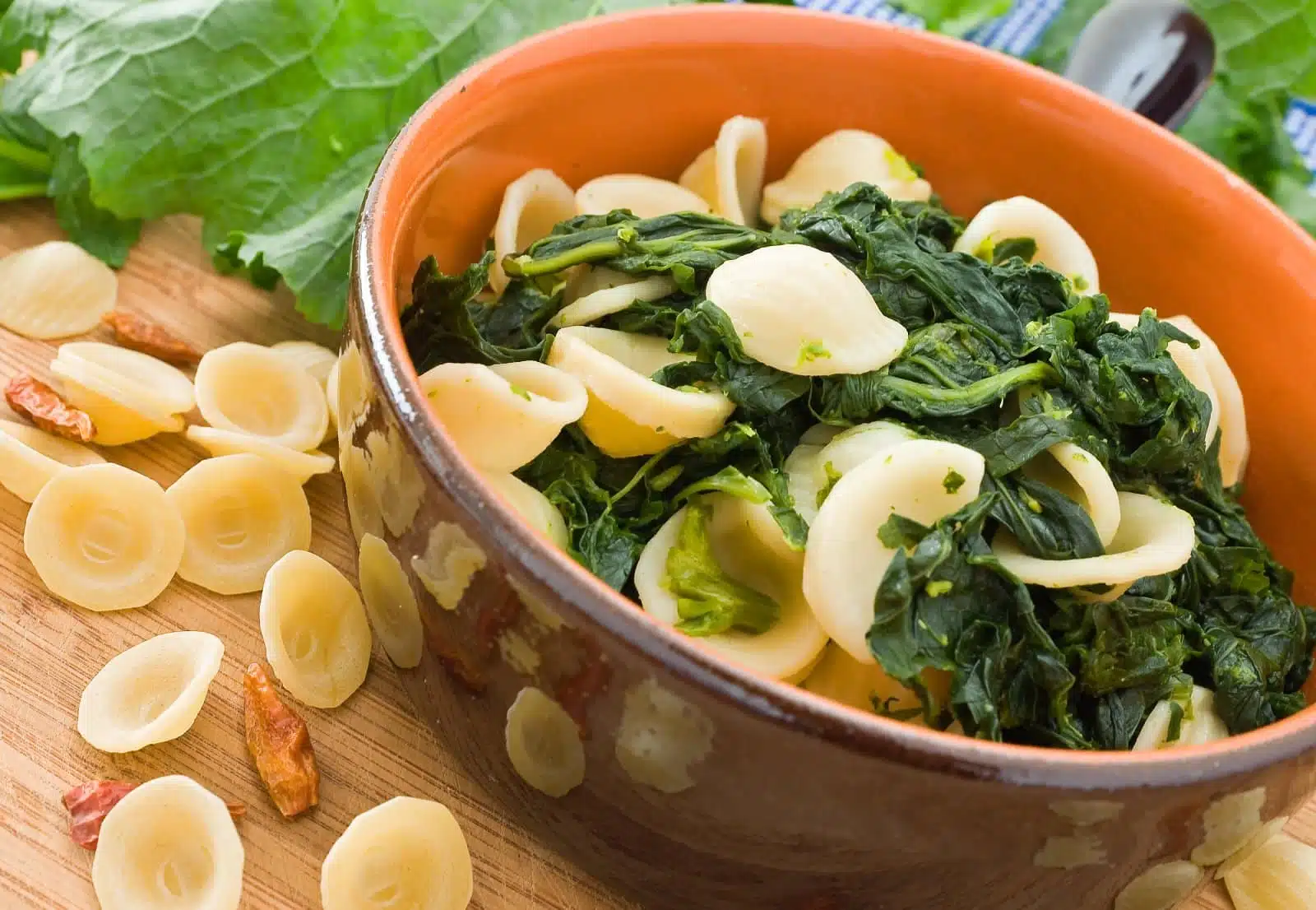
Image Credit: Shutterstock / Miti74
Puglia, the heel of Italy’s boot, is a region where the land and sea meet to create a culinary tradition that is both humble and extraordinary. The region’s olive groves produce some of Italy’s finest olive oil that graces every dish, from the simplest fava bean puree to the most elaborate seafood feast. Puglia’s coastline offers a bounty of fresh seafood, while its fertile interior provides a wealth of vegetables, legumes, and grains that form the basis of the local diet. Orecchiette con cime di rapa, a dish that combines the region’s signature pasta with bitter greens, embodies the Pugliese approach to cooking, where simplicity and quality reign supreme. Puglia’s culinary tradition is a celebration of the region’s agricultural abundance, offering a taste of Italy grounded in the rural south’s flavors.
Insider’s Tip
Explore Puglia’s ancient olive groves and participate in an olive oil tasting to appreciate the variety and quality of local oils.
When to Travel
Late spring to early summer are good for beach weather, and autumn is good for olive and grape harvests.
How to Get There
Bari and Brindisi have international airports, and the region is accessible by train from Rome and Naples.
10. Sardinia
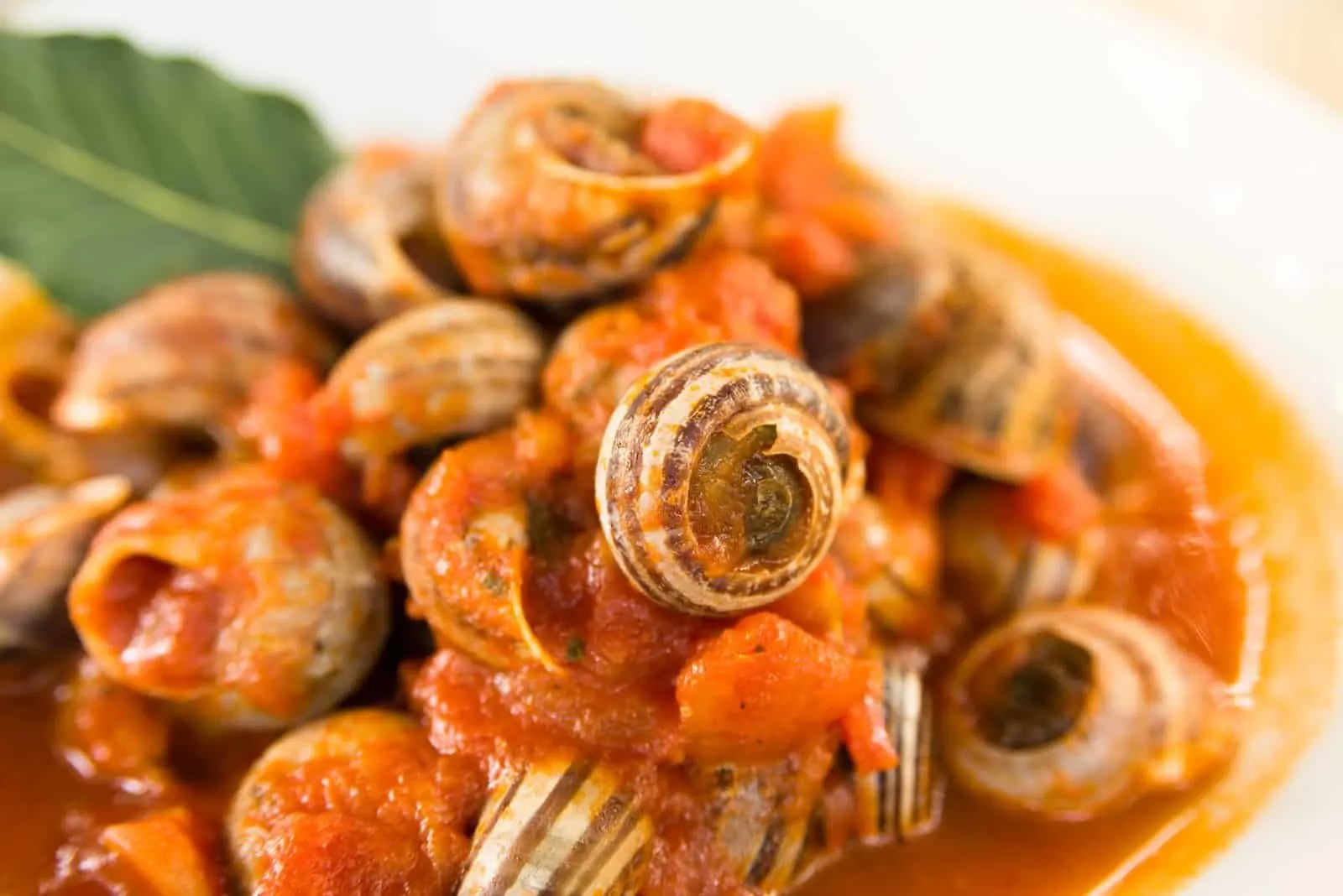
Image Credit: Shutterstock / Alessio Orru
Sardinia’s cuisine is a reflection of its island geography, with a culinary tradition that is distinct from mainland Italy. The island’s pastoral interior is the source of its famed pecorino cheese and succulent lamb dishes, while the surrounding seas provide an abundance of fresh seafood, from lobsters to bottarga. Sardinian pasta, such as malloreddus and culurgiones, showcases the island’s grain-producing heritage, while pane carasau, a crispy flatbread, is a staple of the Sardinian table. The cuisine of Sardinia is marked by its simplicity and the purity of its flavors. Here, food is a direct expression of the landscape, offering a culinary experience deeply rooted in the island’s history and traditions.
Insider’s Tip
Visit a shepherd’s hut in the mountains to experience the traditional way of making Pecorino Sardo.
When to Travel
Spring for wildflowers and pastoral landscapes, and autumn for food festivals.
How to Get There
Sardinia is served by airports in Cagliari, Olbia, and Alghero, with ferries from mainland Italy.
11. Liguria
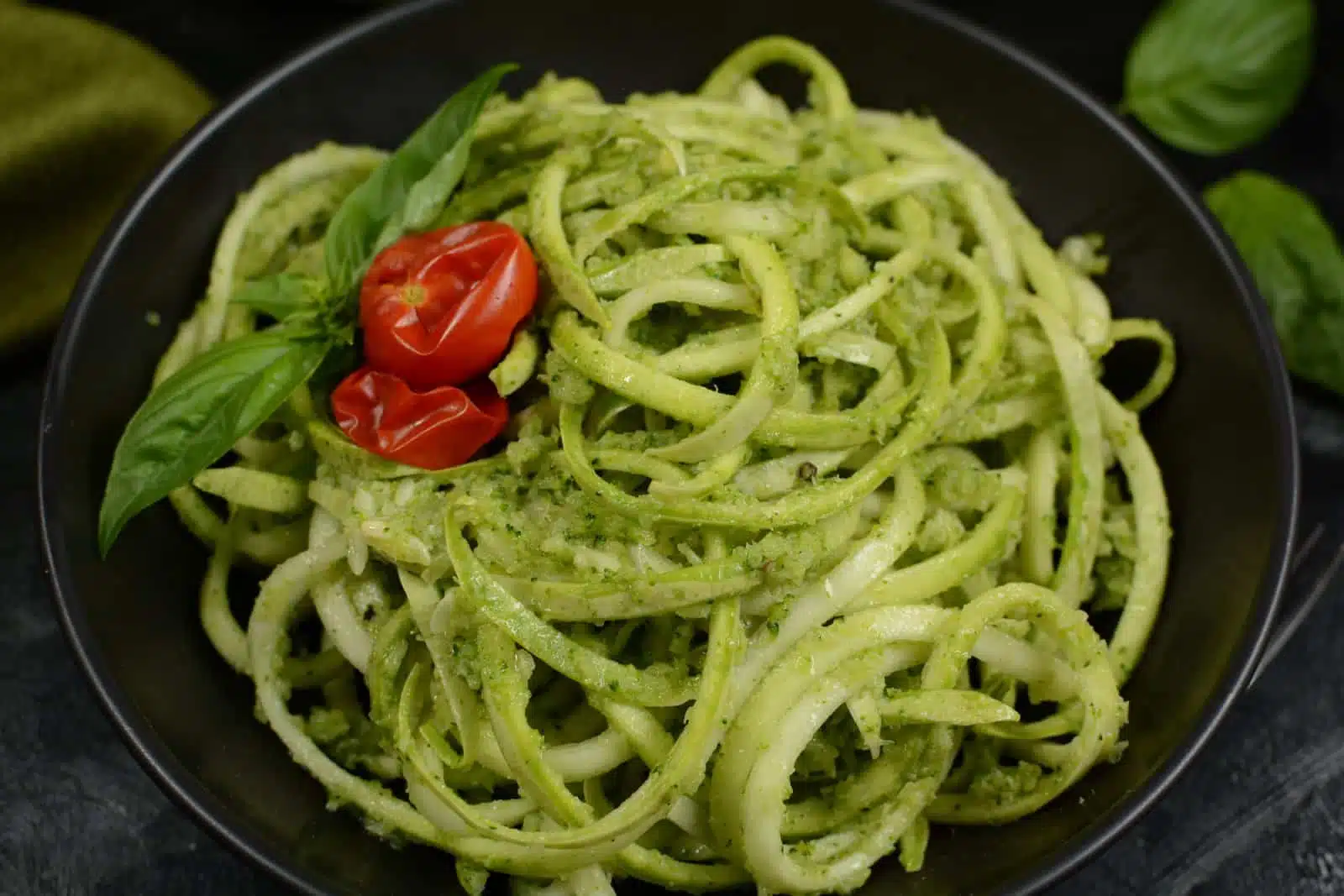
Image Credit: Shutterstock / Azra H
Liguria, a slender crescent along Italy’s northwest coast, is a region where the mountains meet the sea, creating a culinary tradition that is fresh and vibrant. The region is the birthplace of pesto, a basil-laden sauce that captures the essence of Ligurian cuisine, characterized by its use of fresh herbs and vegetables. Liguria’s rugged terrain is ideal for cultivating olives and grapes, producing delicate olive oils and crisp white wines that complement the local seafood. The region’s picturesque villages, from Portofino to the Cinque Terre, are home to trattorias, where the menu changes with the catch of the day, offering dishes like fritto misto and trofie al pesto. Liguria’s cuisine is a celebration of the Mediterranean, where the sea’s bounty and the land’s richness come together in light, flavorful, and quintessentially Italian dishes.
Insider’s Tip
Explore the Cinque Terre villages to enjoy Ligurian cuisine with a view of the Mediterranean.
When to Travel
Spring and autumn for mild weather and fewer crowds.
How to Get There
Genoa, the regional capital, has an airport and is a major train hub, making Liguria easily accessible.
12. Trentino-Alto Adige
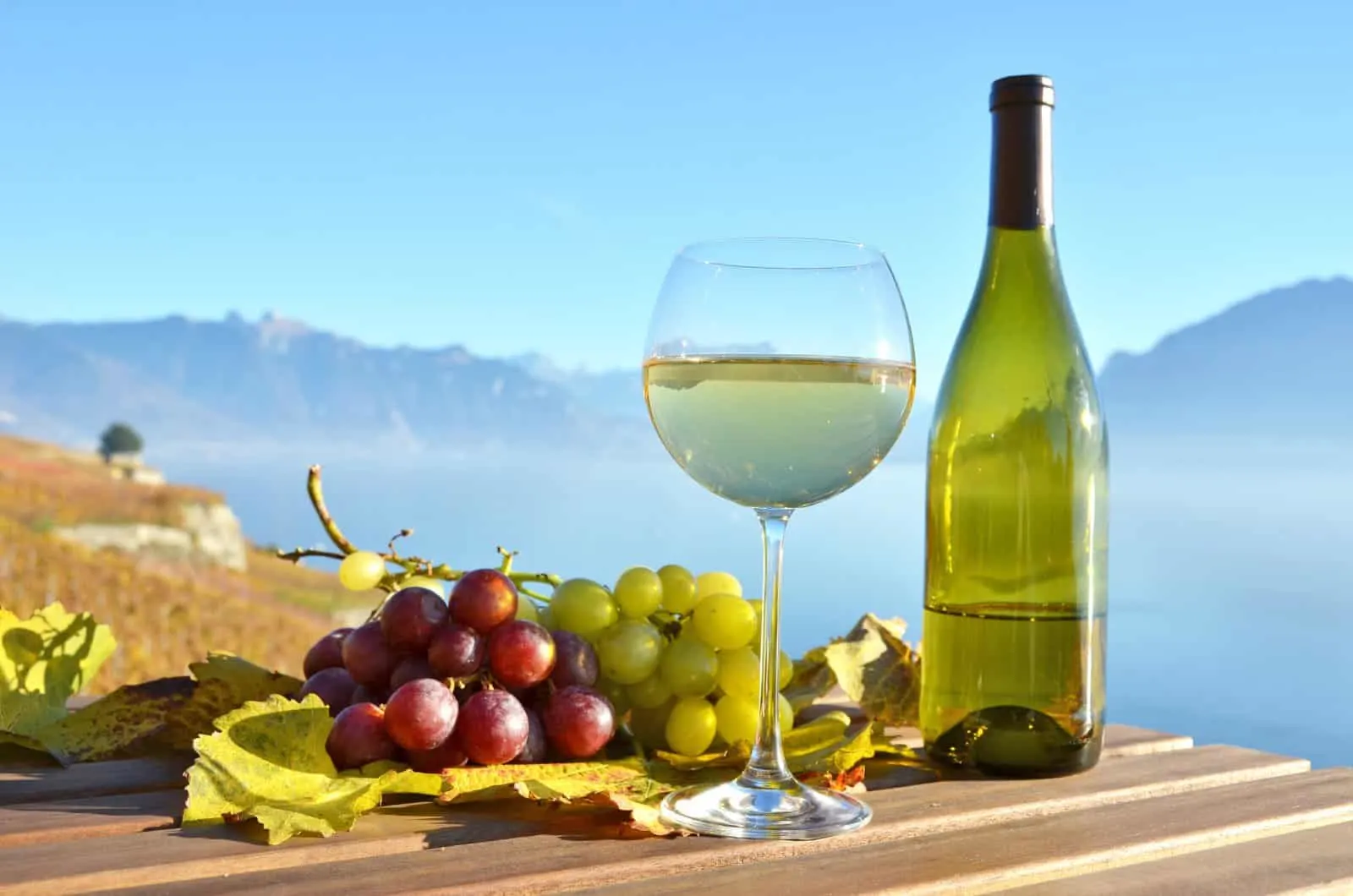
Image Credit: Shutterstock / Alexander Chaikin
Trentino-Alto Adige, nestled in the heart of the Dolomites, offers a culinary tradition that is a fusion of Italian and Austrian influences, reflecting the region’s unique cultural heritage. The cuisine here is hearty and satisfying, designed to fuel the body against the backdrop of the rugged Alpine landscape. Speck, a lightly smoked ham, is a regional specialty, adding depth and flavor to dishes like canederli, bread dumplings served in broth. The region’s abundant apple orchards and vineyards contribute to its culinary diversity, with apple strudel and wines like Gewürztraminer and Lagrein showcasing the fruits of the local terroir. Trentino-Alto Adige’s cuisine is a testament to the region’s ability to blend traditions, offering a gastronomic experience that is both comforting and sophisticated, a reflection of its Alpine identity.
Insider’s Tip
During the apple harvest, visit orchards and taste the region’s fresh apple varieties.
When to Travel
Autumn is for harvest festivals, and winter is for Christmas markets and skiing.
How to Get There
Bolzano has a small airport, but the region is more commonly reached by train from Verona or Innsbruck.
The Bottom Line

Image Credit: Shutterstock / AS photo family
Exploring Italy through its culinary traditions offers a rich and varied experience that goes beyond the stereotypes of pizza and pasta. Each region presents its flavors, ingredients, and cooking methods, telling the story of Italy’s diverse landscapes, cultures, and histories. Whether you’re sipping Barolo in Piedmont, enjoying fresh seafood in Sicily, or savoring Pecorino in Sardinia, the culinary traditions of Italy invite you to explore and appreciate the depth and breadth of Italian cuisine. Buon viaggio e buon appetito!
More From The Green Voyage
Top 10 Trending Travel Destinations 2024
6 Essential Banking Apps for International Travel – Managing Your Finances on the Go
Traveling With Kids – 10 Tips to Create Memorable Family Holidays
The post 12 Culinary Traditions of Italy – A Region-By-Region Guide to Italian Cuisine 2024 first appeared on The Green Voyage.
Featured Image Credit: Shutterstock / fornStudio.
Tips for Trip Success
Book Your Flight
Find an inexpensive flight by using Kayak, a favorite of ours because it regularly returns less expensive flight options from a variety of airlines.
Book Your Hotel or Special Accommodation
We are big fans of Booking.com. We like their review system and photos. If we want to see more reviews and additional booking options, we go to Expedia.
You Need Travel Insurance!
Good travel insurance means having total peace of mind. Travel insurance protects you when your medical insurance often will not and better than what you get from your credit card. It will provide comprehensive coverage should you need medical treatment or return to the United States, compensation for trip interruption, baggage loss, and other situations.Find the Perfect Insurance Plan for Your Trip
